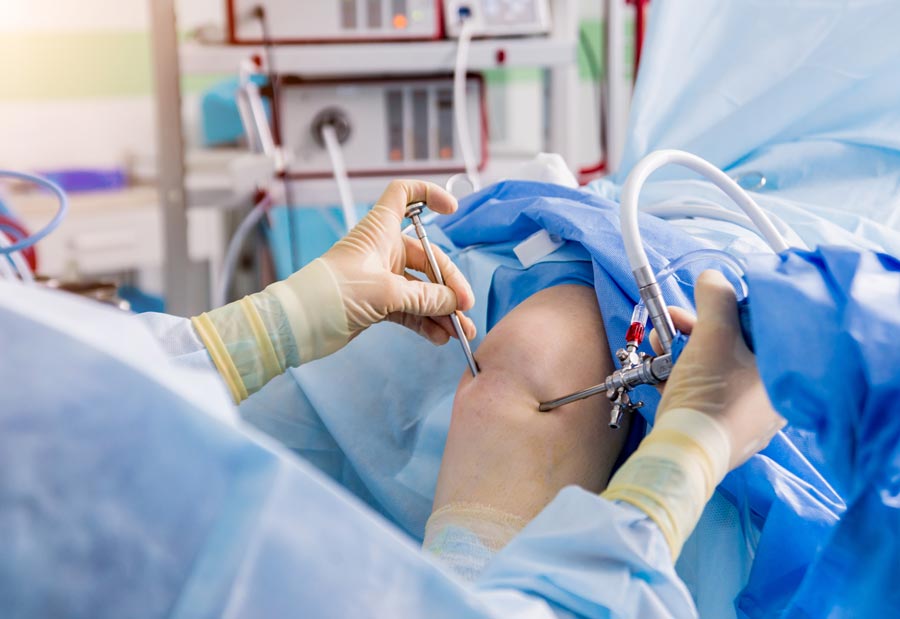ACL (anterior cruciate ligament) reconstruction surgery is a critical procedure aimed at restoring stability and function to the knee after a tear or injury. While it can significantly improve mobility and quality of life, understanding the potential risks and complications is essential for patients considering this surgery.
Understanding ACL Reconstruction Surgery
ACL reconstruction involves repairing or replacing a torn ACL, which is crucial for knee stability, especially during activities involving sudden movements or changes in direction. It’s commonly recommended for individuals who are active and wish to return to sports or physical activities.
Common Risks Associated with ACL Reconstruction
Infection: One of the primary concerns post-surgery is infection. Despite stringent sterile techniques, there is a small risk of infection at the surgical site. Symptoms include increased pain, swelling, redness, or fever. Patients are often prescribed antibiotics to minimize this risk, and maintaining good wound care practices is crucial.
Bleeding and Blood Clots: During and after surgery, there is a risk of excessive bleeding or formation of blood clots (deep vein thrombosis). Compression devices, medications, and early mobilization are used to reduce these risks. Symptoms of blood clots include pain, swelling, warmth, or redness in the calf or thigh.
Nerve and Blood Vessel Damage: While rare, ACL reconstruction surgery can potentially damage nearby nerves or blood vessels. This may lead to numbness, tingling, or circulation problems in the leg. Surgeons take precautions to minimize such risks during the procedure.
Reaction to Anesthesia: Anesthesia-related complications can include allergic reactions, nausea, vomiting, or respiratory issues. Anesthesiologists carefully assess patients’ medical histories to choose the most suitable anesthesia type and monitor patients closely throughout the surgery.
Complications During and After Surgery
Graft Failure: The ACL graft may fail to integrate properly or tear again after surgery, especially if rehabilitation guidelines are not followed diligently. Factors such as graft type, surgical technique, and patient compliance with post-operative care contribute to graft success rates.
Persistent Pain and Stiffness: Some patients experience prolonged pain or stiffness in the knee following ACL reconstruction. Physical therapy and pain management strategies are employed to alleviate discomfort and restore range of motion.
Joint Stiffness and Limited Range of Motion: Immobility after surgery can lead to joint stiffness and difficulty achieving full range of motion. Early mobilization and adherence to rehabilitation exercises are crucial in preventing and managing these complications.
Post-Surgical Rehabilitation Challenges: The success of ACL reconstruction heavily depends on rigorous post-operative rehabilitation. Patients must commit to a structured rehabilitation program to regain strength, flexibility, and functional mobility.
Long-Term Considerations
Risk of Osteoarthritis: Individuals who undergo ACL reconstruction are at a higher risk of developing osteoarthritis in the affected knee joint later in life. Managing weight, staying active, and possibly using braces or orthotics can help mitigate this risk.
Return to Activity Concerns: While many patients successfully return to their desired level of physical activity after ACL reconstruction, there’s a balance between pushing recovery too quickly and allowing sufficient time for healing. Clear guidance from healthcare providers is essential for a safe return to sports or vigorous activities.
Patient-Specific Factors: Age, lifestyle, overall health, and pre-existing conditions can influence surgical outcomes and recovery. Personalized treatment plans and discussions with healthcare providers help tailor expectations and minimize risks.
Minimizing Risks and Optimizing Recovery
Pre-surgical Evaluation and Preparation: Comprehensive pre-operative assessments help identify and address potential risks, ensuring patients are physically and mentally prepared for surgery.
Post-operative Care and Rehabilitation Guidelines: Following surgery, adherence to rehabilitation protocols prescribed by physical therapists is crucial for achieving optimal outcomes. This includes exercises to strengthen the knee, improve flexibility, and gradually return to normal activities.
Regular Follow-Up Appointments: Scheduled follow-up visits allow healthcare providers to monitor healing progress, address any concerns, and adjust treatment plans as needed. Open communication between patients and their medical team supports successful recovery.
Takeaway
ACL reconstruction surgery offers significant benefits for individuals recovering from ACL injuries, enhancing knee stability and function. However, understanding the potential risks and complications is crucial for making informed decisions and optimizing outcomes. By partnering closely with healthcare providers and committing to post-operative care, patients can navigate these challenges effectively and regain active, pain-free lifestyles.






